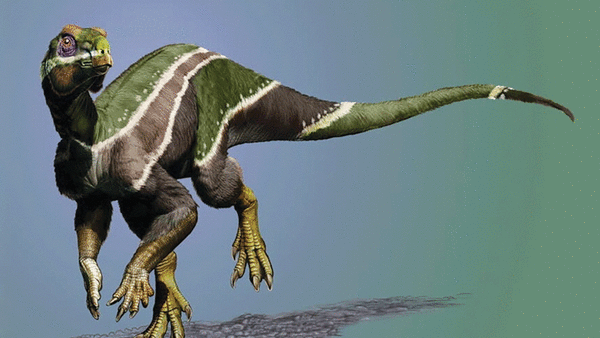

A newly discovered dinosaur may have been a last gasp for the species during a period when Earth’s warming climate forced big changes to global dinosaur populations, a study suggests. The plant-eating animal, named Iani smithi after Janus, the two-faced Roman god of change, was an early ornithopod.
This group of dinosaurs ultimately gave rise to the more commonly known duckbill dinosaurs such as Parasaurolophus and Edmontosaurus.
Most of the young dinosaur’s skeleton — including skull, vertebrae and limbs — was recovered from Utah’s Cedar Mountain Formation in America.
Corresponding author Lindsay Zanno, associate research professor at North Carolina State University and head of palaeontology at the North Carolina Museum of Natural Sciences, said: “Finding Iani was a stroke of luck.
“We knew something like it lived in this ecosystem because isolated teeth had been collected here and there, but we weren’t expecting to stumble upon such a beautiful skeleton, especially from this time in Earth’s history. Having a nearly complete skull was invaluable for piecing the story together.”
She added: “Iani may be the last surviving member of a lineage of dinosaurs that once thrived here in North America but were eventually supplanted by duckbill dinosaurs.
“Iani was alive during this transition — so this dinosaur really does symbolise a changing planet.
“This dinosaur stood on the precipice able to look back at the way North American ecosystems were in the past, but close enough to seethe future coming like a bullet train. I think we can all relate to that.”
Iani smithi lived some 99 million years ago (the mid-Cretaceous), and researchers say its most striking feature is its powerful jaw, with teeth designed for chewing through tough plant material.
According to the study published in Plos One, Iani smithi is unique not just because it is newly discovered, but also because of its rarity in the North American fossil record and its position in dinosaur history.
Dr Zanno thinks that studying this fossil in the context of environmental and biodiversity changes during the mid-Cretaceous will shed more light on the history of Earth. — PA Media/dpa
Oman Observer is now on the WhatsApp channel. Click here


